
Tuesday, 17 March 2009
Pruning Peach Trees
Updated: Friday, 24 April 2009
Peach trees are in bloom.
Non-stone fruits - that's apples and pears, quince too, I suppose - are pruned in winter. Stone fruits such as peaches, plums, and apricots, are pruned as their buds just barely begin to swell. I called Dick and left a message early in the month, asking if he'd let me know when he was pruning his peach orchard, and might I come watch and take pictures. He called yesterday, and said it had slipped his mind. There were a few trees left to do, and if I was still interested, drive up to the orchard tomorrow morning. Done, and done. Good clear weather, sunny and not windy. What a fine excuse to head over and watch an expert at work.
Dick starts training the trees in his orchard while they're still quite young. Different fruit trees -peach, a pear, a plum, a cherry - can each be told apart even when bare in winter because they each have different growth habits.

Pear trees are upright. These have been in training for years.
A sturdy framework, deliberately kept low for easy harvest
and sturdy enough to support the weight of all the fruit.
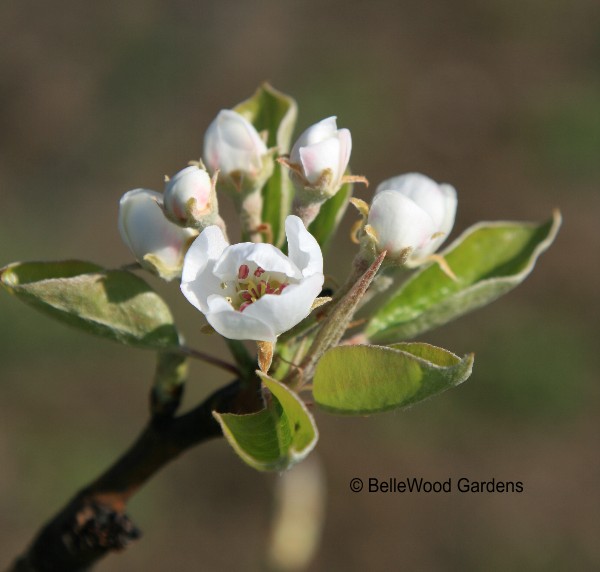
UPDATE: It is now April, and the pear trees are almost in full bloom.

Here's a row of older peach trees. Dick trains them to three or
four main branches, wide spreading. Anything crossing
in towards the center is removed. His goal is, again,
to create a sturdy framework at a height that's easily
managed for later chores of thinning fruit, and harvesting.

Practice makes perfect. It takes Dick no more than 10 or 15 minutes
to prune each young tree. And, watching him, I'd say that half that time
is spent eyeing it, deciding what stays and what's to be cut away.
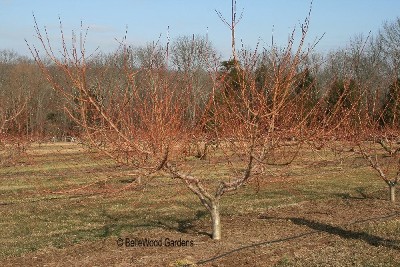
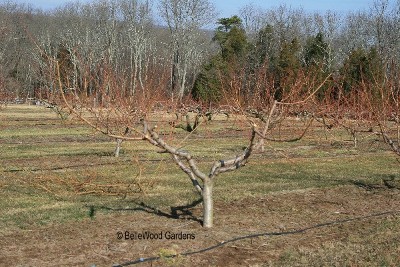
Here's before . . . . . . . and after
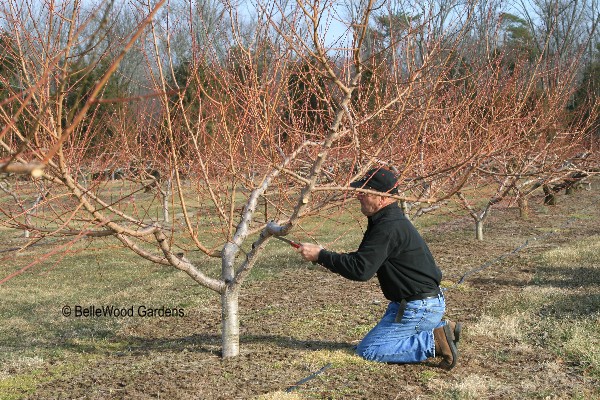
It's all done by hand, no chain saw or power tools, not even
a ladder. Dick uses a folding pruning saw and a pair of secateurs
(that's hand clippers, in American.) The teeth on
his saw are raked, angled, that is, to cut on the pull stroke.
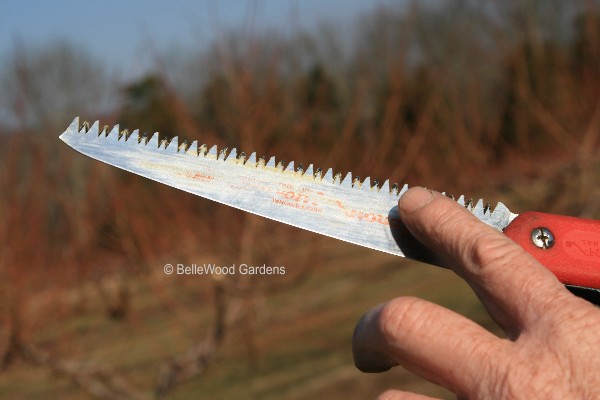
He's got a Quad and a cart up in the orchard. Any wood that's large enough
to burn goes into the cart. Anything smaller is tossed to one side of the row. Later, he'll
come back with a chipper and just run right over the small stuff, turning it into mulch.
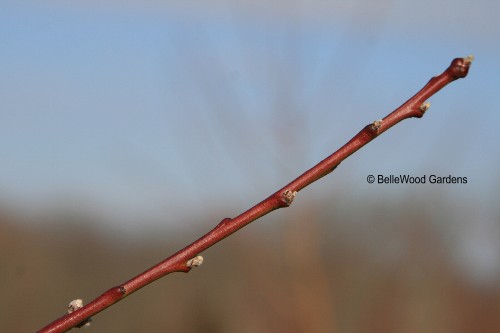
Glossy bark on a young twig, bright color as the sap begins to rise.
Look at the fat flower buds, swelling with promise of summer's
succulent harvest. If Dick doesn't prune this hard, if he doesn't
thin the setting fruit the results are disappointing - stunted
undersize fruit from crowding, broken branches from the weight.

UPDATE: April 24th, and the peaches are at their peak bloom. Honey bees are busy.
Dick was surprised, since peaches are self-pollinating. Doesn't mean there's no reward
for this busy little visitor. Apples need the bees to set their fruit, so do plums and pears.
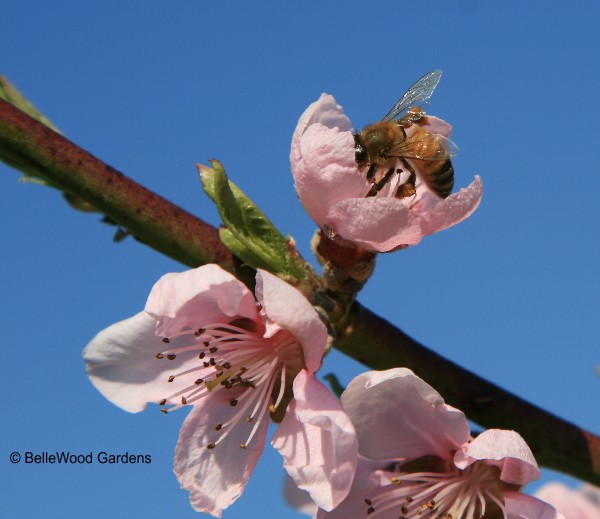
.

UPDATE: Because these younger trees are a different cultivar
their flowers happen to be smaller and deeper in color.

A row of younger peach trees. Not quite a matter of bending the twig.
But certainly a matter of training. There's more to the peaches I'll enjoy
this summer than just sauntering out to pluck them off the tree.
Back to March 2009